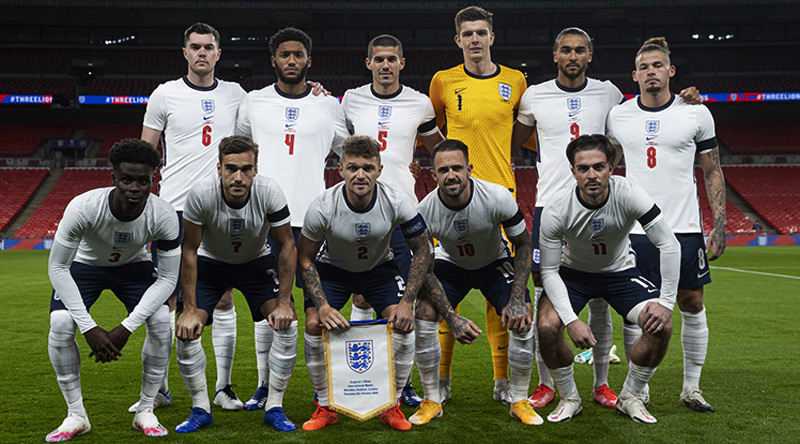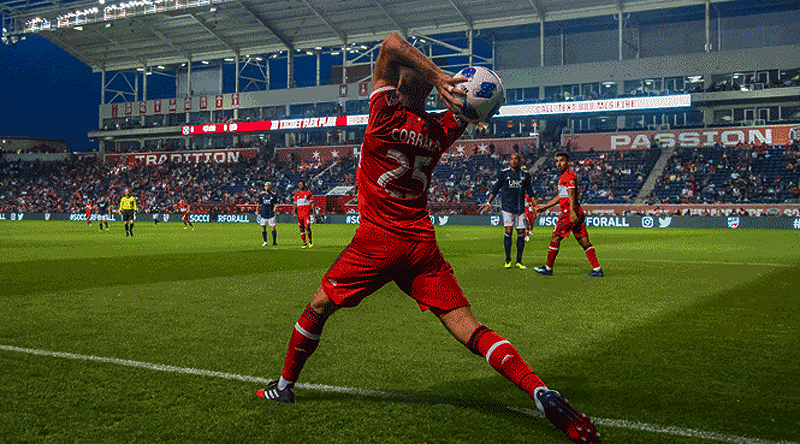Main Football Rules
What are the 17 rules of football? A newbie’s companion to understanding the basic soccer rules & regulations.

The main objective of soccer is to score a goal with any part of the body except the arms and hands. There are 17 Laws of the Game to ensure order and fairness in play. These were formulated by FIFA, the highest governing body of football in the world. The laws were mostly based on the first set of rules formulated by the Football Association, England’s football body, in 1863. Below are the 17 Laws of the Game.
Soccer rule 1: Field of Play

The field of play must be between 90 and 120 meters long (100-131 yards) and between 45 to 90 meters wide (49-98 yards). In international games, the football field dimensions are 100-110 meters (109-120 yards) and 64-75 meters (70-82 yards).
The following areas of the football field must be marked: touchlines/sidelines, goal lines & goal areas, halfway line, center circle, penalty areas, arcs, & spots, and corner arcs. A flag post should be planted on each corner of the field.
Soccer rule 2: The Ball

The soccer ball’s diameter must be 8.6 to 9 inches (22 to 23 cm) and must weigh 14 to 16 oz (400 to 450 grams). If it bursts while in play, the game is stopped and resumed by the referee dropping the ball between two players from opposing sides.
Soccer rule 3: Number of players

A football match is played by two teams of no more than eleven players each, with one player per side playing a goalkeeper. The minimum number of players in a soccer team is seven.
A match is not started or continued if there are less than seven players in a team. In official football competitions, the maximum number of substitutions is three. However, in friendly tournaments, there can be as many as six or unlimited substitutions, depending on what each side have agreed on together with the referee.
Soccer rule 4: Player’s equipment

The following soccer equipments are required of each player: a shirt, shorts, socks, shin guards, and football boots. Goalkeepers from both sides should wear a kit that will distinguish them from the outfield players and the referees. Players are allowed to wear head gears but are discouraged from wearing most forms of jewelry.
Soccer rule 5: Head referee

The duties and responsibilities of the head referee in soccer include: ensuring that players wear the proper strip and equipment, signaling the start and end of game, citing and punishing violations of rules, stopping play if a player requires medical attention, deciding whether or not to continue a game, and keeping time.
The referee cites fouls and infringement of the rules and prevents repeated occurrences of unsportsmanlike conduct by cautioning players with a yellow card or sending them off with a red card. Two yellow cards in football is equivalent to a red card. A player who receives a red card in football cannot be replaced so his team must continue the game with one man less.
Soccer rule 6: Assistant referees

The role of assistant referees in football or linesmen is primarily to assist the main referee by signaling for corner kicks, throw-ins, and violations of the offside law.
They may also bring to the referee’s attention the infringements that he has not noticed of. However, it is always the head referee who has the final word.
Soccer rule 7: Match duration

The length of a soccer match is 90 minutes, played in two equal halves of 45 minutes. Additional minutes in a soccer game may be played at the end of each half to compensate for lost time during the game.
The added minutes are called “injury period” and should not be confused with the overtime, which is played in some competition if a winner is not yet decided after regulation time.
Soccer rule 8: Start/restart of play

A kickoff starts a football game and restarts it at the second half or after a goal is scored. The team which kicks off the ball at the beginning of the match is determined by a coin toss.
During the kickoff in football, only two players are allowed inside the center circle: the one kicking and the one receiving the ball.
Soccer rule 9: Ball in and out of play

The soccer ball is out of bounds when it has crossed the goal line or touchline whether on the ground or in air. If it rebounds off the referee, an assistant referee, a goal post, crossbar, or corner flag post and remains inside the field, then it is still in play.
Soccer rule 10: Method of scoring

A goal is scored in football if the ball crosses the goal line between the two goalposts and under the crossbar, as long as no violation of the rules has taken place. The side that scores the most goals wins. If both teams have the same number of goals at the end of the match, it is considered a draw even if neither of them scored a goal.
Soccer rule 11: Offside

A player is in offside position if there are fewer than two defenders (including the goalie) between him and the goal line. A violation of the offside rule in football occurs if he is in that position and the ball is played to him. A free kick is awarded to the opposition if a player is caught offside.
Soccer rule 12: Fouls and misconducts

The following are the most common fouls in football: kicking, tripping, pushing, or charging another player recklessly; striking or attempting to strike an opponent or any member of the opposing side. A foul is called if a player: makes a tackle but hits the player before the ball; deliberately handles the ball (except the goalkeeper in his proper area); or if he uses excessive force in defending an opponent.
Soccer rule 13: Free kicks

A free-kick in football restarts a play after a foul or rule infringement is committed and is usually taken from the spot where the violation was committed. A free-kick can either be “direct”, in which a kicker may score directly, or “indirect”, in which another player must touch the ball before a goal can be scored.
Soccer rule 14: Penalty kick

A penalty kick in football is awarded if a defender commits a foul inside his own penalty area. The kick is taken from the penalty spot and all the players (except the kicker and the goalkeeper) must be outside the penalty area and penalty arc.
Soccer rule 15: Throw-in

A throw-in in football is awarded to a team if the ball goes over the touchline. It is awarded to the team opposing the side that touched the ball last. The throw is taken from the spot where the ball goes out of bounds. The taker must throw the ball with both hands, both feet on the ground, and facing the field of play.
Soccer rule 16: Goal kick

A goal-kick in football is awarded to the defending team if the opposing team causes the ball to go over the goal-line. Any player from the defending side is allowed to take the goal kick. It must be taken anywhere on the goal area and must go beyond the penalty area or it will be retaken. The ball must be touched by another player before the taker can play it again.
Soccer rule 17: Corner kick

A corner kick in football is awarded to the attacking team if an opposing player is the last to touch the ball before it goes out of bounds on the goal-line. The attacking team resumes play by placing the ball in the corner arc nearest to where it crossed the goal line.
